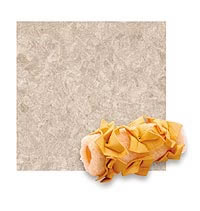
Decorative & Faux Effects Using Rollers
Though paint rollers have been around since 1940, it is only recently that specialty roller covers have been developed to create decorative effects.
by Gail Elber
around since 1940, it is only recently that specialty roller covers have been developed to create decorative effects. Decorative and faux painters also find plenty of uses for plain old roller covers. Here are some decorative effects you can create with
rollers.
Roller covers consist of fabric wound around a core. Professional-quality rollers have a core of plastic, or cardboard impregnated with plastic, which can stand up to cleaning and reuse. Cardboard-cored rollers sold to do-it-yourselfers are cheaper and can be discarded after use.
Natural fabrics such as lamb’s wool and mohair are best for solvent-based paints, stains, and varnishes. Synthetic fabrics, including polyester and nylon, are better for water-based paints but can also be used with solvents. Some covers combine natural and synthetic fibers. Foam rollers are intended for applying thin layers of enamel or glaze to smooth surfaces. The denser the foam, the more even the coverage.
The fabric may be knitted or woven. Knitted covers are cheaper but more likely to shed lint; wash them in soapy water before using, and don’t expect to reuse them more than a couple of times. Woven covers produce less lint.
The nap or pile height determines how much paint the roller holds, how rough a surface it can cover, and what kind of texture it leaves. Quarter-inch naps are for applying glossy enamels to smooth surfaces. At the other extreme are one-inch or inch-and-a-quarter naps for slathering paint onto stucco or concrete blocks. A three-eighths-inch nap is the choice for most interior drywall work, delivering an efficiently large load of paint without producing an excessive orange-peel texture.
These variables (core, fabric, knitted or woven, and nap) should be enough information with which to choose a roller for a job. However, if you are poring over a catalog on a rainy day, you might come across two more variables. Denier is the diameter of each fiber in the cover. Better rollers have fibers of various diameters, which lets them hold more paint. Density is the number of fibers per square inch. The more fibers, the more evenly the roller will distribute paint.
“Rollers can be used to apply glazes, textures, base coats, and clear coats,” says
Kelly King, principal of the Faux Finish Institute in Omaha, Nebraska (www.in-faux.com).
King favors smooth-surfaced synthetic rollers for rapidly applying base coats and clear coats. He finds foam rollers adequate for rolling a glaze on a wall, but steers away from them for other work: “I feel they leave too many bubbles in the finish and do not hold enough material.” For applying heavy texture
material, King uses a three-quarter-inch nap lambswool cover.
Michele Santilli of the North American School of Decorative Art (NASODA) (www.nasoda.com) favors the dense Whizz foam roller from Worktools International (www.whizzrollers.com) for quickly applying base coats and varnish to sample boards. “I use it for varnishing because it doesn’t make an orange-peel effect,” she explains.
Worktools International has also developed the Unlimited Creations series of roller covers that can be used for both positive (adding material) and negative (removing material) techniques. After applying a base coat and allowing it to dry, you apply a thin layer of glaze using the company’s Whizz foam or velour roller. Then you roll one of the company’s textured rollers dry over the wet glaze to remove it. Rollers with beehive, flock, and various tight or floppy rag surfaces produce different effects.
Quali-Tech Manufacturing’s Deco-Ease roller covers (www.quali-techmfg.com) are made from natural sea sponges and can be used to sponge glaze either on or off.
If you’d like to enter the third dimension, experiment with the Purtex roller from Purdy (www.purdycorp.com), which has a surface of synthetic loops that can be used to texture drywall compound.
King says, “Generally I throw away roller covers that we use in thicker materials that take forever to clean out. If we can clean it in a reasonably short amount of time, we will clean it out. Typically we always clean a roller after basecoats, and clear topcoats and faux finishes, because those materials will clean easily. We usually throw them away after texture materials are applied with them.”
Tom Typrowicz of Worktools, Inc. points out that solvent storage problems and disposal costs make it cost-effective to throw away rollers used in oil-based materials. “Since most of the glazes today are water-based products, the rollers are easily cleaned by using soap and water with a good rinse. But in the case of the oil-based glazes, although following the cleaning instructions of the coating manufacturer can clean the rollers, it is usually more cost-effective to discard the roller after completing the job.”
Power rollers such as the Wagner QuickTouch PRO can speed the process of covering a big expanse. They pump paint from a one- or five-gallon can and have a roller shield that eliminates spatters. You can use any roller cover.
To quickly clean water-based materials from roller covers, try a device such as the Wagner Roller Washer that forces water from a hose through your roller cover (www.dcmsoft.com/wagner). After the cover is clean, a spinner such as Shur-Line’s (www.shurline.com) will rapidly extract water or solvent.
|

